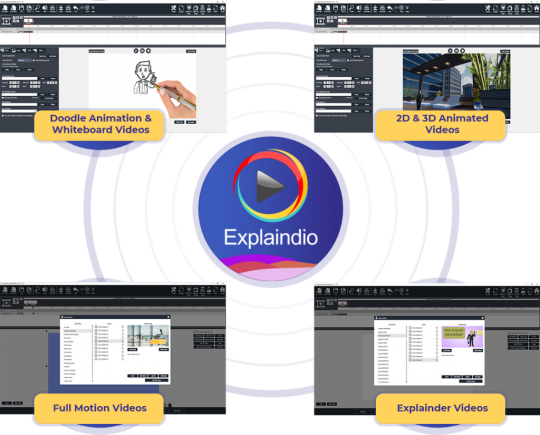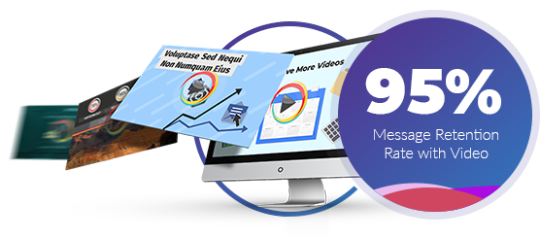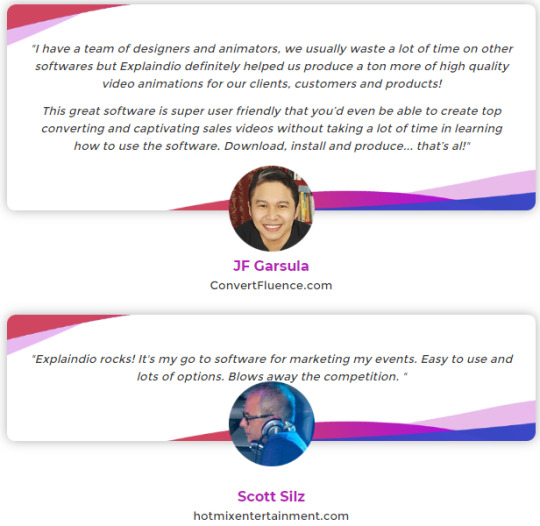#it's higher effort than the usual sketch but it's not a rendered piece
Text

Astarion & Veldren
#martin plays bg3#bg3 spoilers#(maybe ? idk)#astarion#bg3 fanart#sketches#my art#this goes in sketches bc. idk how to classify that one ok.#it's higher effort than the usual sketch but it's not a rendered piece#it's. a colored sketch i guess#hmmmmmmmmmmmmmmmmmmmmmmm vampire <3#sometimes as a bard u gotta b a little dramatic when your vampire bf is about to bite you#fun fact i opened my drawing program with the idea to practice some stuff#and instead i just. drew that.#i had references picked out for practice and all!#i just. saw one of the ones i had and went 'oh thatd be good for these two if i tweak the post just a bit'#pffffff
48 notes
·
View notes
Text
A little something about morality. Enough of my life has been spent working with mathematical structures and other theoretical constructs that the patterns of thought trained for those modes have bled through to other parts of my life. Morality is a core facet of life and its been shaped by the math just as much as the rest.
Generating complete mathematical proofs taught me more about skepticism than any other experience in my life. So often on the road to proving a theorem you will encounter the thought "it would be really convenient for this logical structure if fact X held". You can see how all the pieces fall in to place given the solidity of X and X probably has a certain internal plausibility and if X just held in truth then you could move on from this proof to something more relaxing (you may or may not have an unhealthy amount of animosity toward the proof built up at this point). It's tempting to write your first line "it's trivial to show X holds", sketch out the rest, and hope you've kicked up enough dust to pass - I've encountered my fair share of "proofs" using that structure. The sticking point is, it is mathematical maturity not to take the easy route of hope and instead to demonstrate the rigour required to generate a complete sound answer. And there's a reason for this. Your intuition in this area is untrained and often you discover (forging ahead) that you cannot prove X. After a lot of sweat and a pinch of luck you discover the counterexample or contradiction inherent in X that renders it false - the true proof proceeds along other lines.
This general lesson is useful. Convenience or wishing will not make a thing true and intuition should remain tempered with humility. This was actually one of the nails in the coffin for my religious inclinations. So many doubts and questions are answered if religion X is correct in its foundational claims but that has no bearing on whether X is true (only that its comforting). If you're honest with yourself then you cannot use that reasoning from most convenient world.
The next lesson comes from complexity theory. Sure complexity theory is an offshoot of the study of algorithms and so carries the faint stigma of applied mathematician to the theoretician but, stigma aside, it is a deep field full of interesting structure. Far more than I can render here so let's focus on one part. Complexity theory separates problems into an infinite leveled hierarchy depending on how hard the problem is to solve. In general, a problem is on level n+1 of the hierarchy if you can solve it when given access to a magic box that instantly solves any problem on level n. This simple picture is somewhat complicated by the fact that we don't know yet whether there are truly infinite levels or whether the structure collapses to some finite number of sets. This uncertainty is a source of some unease within the community.
Personally, I hold that the hierarchy is infinite because I believe that any universe where this is not true is simply not perverse enough to resemble our own. If my faction is correct then it is a point of mathematical correctness that there problems where its strictly easier to recognize a solution than it is to generate one (that one might also generalize, good writing and good editing are parallel skills but the first seems strictly harder than the second). By way of canonical example, its easier to verify given variable assignments to any random boolean equation than it is to generate those boolean assignments from scratch (verily, humans must earn their truth assignments by the sweat of their brow). This is the lesson I want you to learn from this section: when you see someone present an argument or a position and you compare it to your world view in a away that makes the argument seem both completely revolutionary and completely obvious, you have to step back and give them credit for locating that idea in the first place. This is a non-trivial amount of work. Conversely, when you recognize a particular solution to a general problem, give yourself a pat on the back because you've done something real.
An aside here, I realize that the spirit of the second part clashes somewhat with the lesson of the first part. All I'll say is that it all rounds down to humility and a conviction that issues we don't already recognize as easy almost certainly reduce to something intractable.
Let's talk about solvable. Wait, first a second aside - this is the true power of quantum algorithms. There are methods to use the uncertain nature of quantum bits to to quickly search the entire space of possible solutions and with high probability locate the exact solution to a given problem. It feels like magic and will revolutionize our world when engineering catches up to theory.
Let's talk about solvable. In particular, what do you do when the problem you wish to solve lies in one of the higher levels of the hierarchy, the levels we can't reach? Unless you're prepared to spend ungodly amounts of time on it or you get insanely lucky then you don't get to know an exact answer to the particulars of the problem. You *must* reframe it in a way that allows for an approximate answer, in effect transforming the question into a cousin living lower on the hierarchy. You're being forced to compromise, the universe is built to make you use heuristics. This is important - it's not about heuristics being quicker, it's about exact methods not being able to give you answers at all. Integer programming looks a lot like linear programming but it is in fact significantly more difficult in the general case. The structure of the universe means you must think in probabilities and in error bars and ponder trade-offs, in short the judgment no one asks of an oracle.
An event occurs in front of two of us. I know what I witnessed. And I'm almost certain that you didn't blink. And it's highly probable that you know I witnessed it. And its pretty likely that you think I think you witnessed it. And so on, with a little bit more uncertainty creeping in at each moment of recursion. This sad state of affairs is fine for the most part because usually the stakes are so low. But ask yourself how much more you'd care about common knowledge if your life depending on my having witnessed precisely the same event as you. We hear about that failure mode in the context of criminal trials all the time. Building shared knowledge requires enough work that it's used in the bureaucratic filter for asylum seekers and green card applicants. When you see one person able to get a group to agree on one particular interpretation of facts, remember that you just witnessed something hard. True common knowledge is infinite levels of recursion in the stack and it is impossible. For every situation, there's a point where the probability on the next level is too low for confidence, it's just a question of whether you calculate that far. And the probabilities deteriorate faster the more people you add.
We started with some fairly basic math truisms and moved through some hand-wavy logic constructions, let's end with something obscure. Communication is not free. If I want to learn about something that's happening far away or coordinate some communal action, I have to rely on messages that take multiple hops to reach their destination. We still have not mastered error correcting codes for common speech, much less methods for achieving better clarity in communication (case in point, how nonsensical most of this post reads), so your messages are going to get altered en-route. Beyond that, you're still the victim of the network. The effort/uncertainty of message sending defines a finite limit in the number of hops that we can use and still feel confident in the response. There are certain pathological graphs in which the vast majority of nodes believe thing one but when polling only their k-distant neighbors will come to believe that thing two is actually the majority belief. This is beyond government censorship or Overton windows, this is about never being able to know whether your mental image of society is accurate or if you've just been deceived by the structure of your communication.
It's the end and you're feeling cheated because I didn't say much about morals despite promises in my very first sentence. Morality as we understand it today is a bunch of ad hoc, best effort responses to a set of questions that were poorly defined in their original contexts and which haven't altered to match the multiple ways our social world has changed. If you've read the above then you realize solutions are hard and solutions to problems with many parts are harder. Social solutions addressing problems involving many people are worse and pro-social solutions are monumental. Answers are always going to rely on guesswork, methods need to be able to be executed under uncertainty, and if you think a general code of behavior is easy then you're wrong. You must cultivate judgment because the universe is not built to let you offload your thinking to some perfect algorithm.
7 notes
·
View notes
Text
Explaindio Video Creator Software Review【Unique Bonuses】
Explaindio Video Creator 4.0 Assessment – Are you trying to find greater knowleadge about Explaindio Video Creator 4.0? Please examine by my trustworthy assessment about it earlier than selecting, to consider the weaknesses and strengths of it. Can it’s well worth your effort and time and money?
Who’s The Creator Of Explaindio 4.0?

Andrew Darius is the person behind Explaindio 4.0. Andrew has a few years of knowledge assisting companies each small & giant with video advertising, video manufacturing & different slicing edge commercial enterprise applied sciences.
He even consulted with a Fortune a hundred agency because the professional in his area.
He’s the entrepreneur, who based or co-based 5 begin ups. These days he spent substantial quantity of his time in NYC, main a group constructing a advertising and marketing platform for off-line companies to assist them get each on-line and off-line leads making use of cell & on line applied sciences.
What’s The Predominant Notion Behind Explaindio Video Creator 4.0?
Video is an on-line reflection of your commercial enterprise & guests decide your commercial enterprise founded on knowledge from watching your video clip:
Video has come to be the foremost effective manner for companies & entrepreneurs to promote and interact with their goal audiences on-line.
However this isn’t nearly having a video.
Video is an on-line reflection of your enterprise & guests decide your commercial enterprise founded on knowledge from watching your video.
All it takes on your guest to show away out of your net-web site endlessly is a awful first impression brought on by a non-attractive video.
Right away grabbing guest’s interest, participating them, and constructing believe are the important thing elements of a effective video:
Entrepreneurs, advertisers, trainers, and communicators from companies each small & massive all desire to use greater action, animation, or doodle movies to draw & hold viewer’s interest, as properly as to move on their message in a effective & productive method.
Regrettably, with out the proper device, such content material is tough to create.
It requires graphical & programming experience, or, in case you outsource it, it may value $10,000 for a 5-minute video.
What Is Explaindio 4.0?

Explaindio 4.0 is The sole video content material creation device that permits you to mix 2D & 3D animations, whiteboard sketch factors, and full movement video.
That is the sole video content material creation software program that does all of this, and it may actually ship your conversion hovering sky excessive.
After supporting tens of thousand of video creators, we’ve got found out that movies that mix animation, whiteboard sketch and full action video have the most important influence on the viewer’s interest and engagement.
Not cloud-founded = Freedom:
Explaindio is about freedom. It’s not cloud-founded, so that you have all the pieces you want proper at your laptop with out the want of persistent on-line connection.
You would in no way must fear about sluggish server rendering instances and your job sitting in an exceedingly lengthy processing queue, or being influenced by gradual web connection or its full lack.
With Explaindio 4.0 even full novices can create expert grade:

You don’t want any video manufacturing knowledge to make use of Explaindio.
Creating excessive high quality, stand out film has by no means been this easy.
Explaindio 4.0 permits any person, regardless of what their knowledge stage to create expert attractive movies.
Tweak video advertisements for higher conversions:
Seeking to quickly change your video classified ads to tweak them for higher conversions?
Explaindio 4.0 offers you that freedom and adaptability to do adjustments in a short time as properly.
There’s presently no greater reasonably priced video content material creator with this a lot flexibility.
Extra Income In A Shorter Quantity Of Time:
That interprets to extra income, in a shorter time frame, with out manufacturing fee, which might run up to 10 of 1000’s of , and with out ready for weeks or months to get the video produced.
Explaindio 4.0 Ends Outrageous Expenses And Lengthy Manufacturing Instances:
Traditionally these outrageous fees and lengthy manufacturing instances have lead entrepreneurs and even larger companies to both abandon or drastically restrict their video promotions.
All of it modifications with Explaindio.

Now entrepreneurs, advertisers, trainers, and communicators from companies each small and giant can use greater movies to move on their message, with out the prior restraints.
My Explaindio Video Creator Knowledge
Movies are constantly interest grabbing. It makes simpler to recognize matters. It Is stated that photographs attraction extra than textual content. Movies create participating attract regardless of for what goal it’s created. Climate it’s created for advertising, getting to know, education or entertaining Intention it should usually seize the eye extra than a textual content.
I’m an teacher in a college I should supply lectures by making displays on MS Workplace. And these shows took quite a few my effort and time So I bought explaindio and it made my life simpler. It has such an astounding characteristic. Explaindio interface may be very simple to make use of. You Can create video by making use of white board animation, 3D Pictures, Graphics ETC. you may create a expert video by Utilising its equipment.
• It has professionally designed templates, Animations, graphics and so on. which helped me a great deallots for making my Lecture movies.
• You may additionally promote or buy movies Making use of Explaindio.
• I’m making movies of my lectures for my college students and their gaining knowledge of potential accelerated over the time interval.
• You can’t down load this software program you need to buy it and after buying your login credentials shall be emailed you from the employer.
• Individuals from company sector have seen the effects of visible founded guidelines, seminars to speak with listeners and it was approach greater productive than something else.
I ought to suggest this software program to each instructor, market individual. It’s an extremely beneficial video. One among my buddy additionally utilising this software program for advertising goal and his merchandise income are growing surprisingly. That is very useful for massive organizations that don’t have lots of time and manpower for crating eye catching movies. SO hurry up go and purchase this software program and make your life less difficult and higher.
Explaindio Video Creator 4.0 Regularly Requested Questions and Solutions
Q1: Will I down-load the software program onto my PC or will or not it’s solely obtainable on-line?
Reply: This isn’t an Net-founded App. You’ll down-load it onto your PC the place it’ll be yours to make use of when you want. For the reason that software program shall be in your PC you would not ought to fear about gradual Web response instances.
Q2: Will the movies I create with the software program include any restrictions?
Reply: Completely not. All video clips you create are yours to do with as you please.
Q3: What are the system necessities for Explaindio 4.0?
Reply: This device runs on most Home windows or Mac pc produced inside the previous 5 years as lengthy because it has minimal of 4GB ram reminiscence & enough space for storing.
This fall: Can I set up Explaindio 4.0 on multiple laptop?
Reply: Your license will allow you to put in this system on 2 computer systems. Large licenses are obtainable for organizations & companies.
Q5: Do I should pay for updates to Explaindio Video Creator four.x?
Reply: All Explaindio Video Creator three.x Seasoned updates are FREE throughout the license


O post Explaindio Video Creator Software Review【Unique Bonuses】 apareceu primeiro em Andrew Reviews.
from WordPress https://www.andrewreviews.com/explaindio-video-creator-software/
0 notes
Text
@wingleader: I definitely agree about those trends in regards to dragon art and fantasy art in general. It's infuriating, especially because I see many artists who take a lot of time and effort to create very believable creatures not getting work while "flashier" artists with little to no regard to anatomy are practically thrown tons of paid opportunities.
we’ve talked abt this a LOT on here before, haha. the thing is, it seems like a lot of artists-- esp younger artists-- are learning from the top-down rather than the bottom-up when it comes to drawing. typically, first you learn basic sketch techniques, base shapes, and drawing from life, THEN clean lines, flow, and weight distribution, THEN shading, coloring, and final details. instead, it seems like a lot of younger artists are learning completely backwards, building up their rendering and (to a lesser degree) their lining skills, while leaving anatomy and basic gestural/sketchy planning to the back-burners
I get the appeal of wanting to improve rendering over everything else-- rendering is what (stereotypically) makes a piece really BURST from the canvas and stand out to an audience. thus, if you JUST learn how to render, then you can make a piece look p damn good to a wider (typically layman) audience much faster than if u went the long way ‘round and steadily built up sketching, then anatomy, etc. etc. (or tried to build up all the skills at around the same pace)
really, truly, I get it. as someone who focuses around 95% of my efforts on sketching/anatomy/flow, I’m blown away by the ease with which many artists can pound out a lovingly-rendered figure or background in no time at all. it just boggles my mind to think that so many artists struggle w/ a skillset that I’ve been taught time and time again is so structural and essential to any artist’s personal toolbox, I legitimately can’t imagine making art if I didn’t know what I know abt anatomy, or even just drawing from life
I don’t have an explanation for this trend in older/professional artists (besides work constraints), but I think more young artists are learning top-down now because it’s so easy to find tutorials out and about. this is usually incredibly useful, but it also lets ppl cut out the sketching/lining “middle-man” and jump straight to the rendering w/o having a strong enough sketch base to even support that rendering
again, I totally get the trend, and I don’t blame younger artists for doing this, it’s just a little disheartening to someone who holds a lot of respect and reverence for organic beings and the different anatomical forms they take, aha
what makes me truly angry is when professionals-- whether by time constraints, redesign orders from higher-ups, or by simply playing a system that rewards anatomical laziness-- draw terrible (but beautifully rendered) dragons, then young artists take that art at face value and think, “well, this is just how dragons ought to be drawn!” again, there are few professional artists that I know enough about to confidently point the finger at to blame for this, so I’m really just angry at that the situation itself
-Mod Spiral
#I honestly wasn't planning on belting out this long-ass rant AHA#WHOOPS#mod spiral#wingleader#replies
10 notes
·
View notes
Text
Six was design differs from art
What's the difference between art and design? This is a rudimentary question that often gets overlooked by those who are familiar with the two occupations and their distinctions. Yet people often scratch their heads when I inform them that I've got a Bachelor of Fine Arts degree in Industrial Design with a focus in Product Design. Do I make graphics, books, bridges, buildings, websites, clothing, sandwiches? I've been asked all those questions. So let's shed some light on the profession of design and how it differs from art. Here are the six main distinctions I'd make between the two disciplines. 01. The end product Artists and designers both create visual products, to put it simply. Artists however, create eyecandy to be consumed by the end user. The actual painting or illustration is created with intention to be the final result of the artist's vision. Whether this comes to the market as a book illustration, a canvas for a gallery, a framed work to be hung in a house, or a mural, the artwork is the final product of consumption. Designers create beautiful images as a form of communication and are one small step within a production pipeline. A designer will use renderings, sketches, models and other means to communicate their design to a team of people who all work together to create a consumable end product. The end product may be a video game, movie, lawnmower, laptop, backpack or piece of furniture. The designer's initial sketches, renderings or mock-ups are not intended to be seen by the consumer, but rather to explain their design solution to those who will help bring the design to fruition. 02. How problems are solved Everyone solves problems one way or another. In most cases, an artist's problem to solve is that they have an idea or vision and want to share it with others. He or she creates a piece of artwork and the problem is solved. Designers are often approached with a client's 'problem' which he or she then solves for. For example: a company wants to increase sales of a product they've sold for years. The designer's job then turns into several smaller problems that must convince the (potential) consumer that this product is better than one he or she already owns. The designer could chose to freshen up the form, improve ergonomics, leverage a different production method that lowers cost and, why not incorporate a new feature? Maybe the end result is a modern product that folds up to save space, is more comfortable to use and even costs the consumer less money than the last one he or she bought before. Designers solve problems for clients and consumers. 03. Level of craftsmanship Craftsmanship is a term used to describe the skill used to create a product. Artists are craftspeople because without a high level of craftsmanship, their work would not stand apart from a novice's. Often, an artist's craftsmanship increases over time and therefore increases the value of a painting created by him or her. A designer's craft is in communication and solving design problems quickly and elegantly. A designer need not a high level of craftsmanship to 'sell' the ideas the way an artist may, but nobody can argue, the higher the craftsmanship, the more valuable the designer. 04. How people interact with it The interactions people have with artists' work are often very passive and visual. Unless it's an installation or sculpture, the interactions are often quite minimal. Interaction however, is a very big part of design. Most designers create solutions to common problems by designing products that people interact with often. Whether it's furniture, tools, electronics, clothing, kitchenware, or cars, all of these products are designed with the end user in mind. Before a design can be dubbed successful, it needs to address a number of issues, one of the most important being interaction. 05. The functions they serve What function does artwork serve? It's used as a visual stimulation, as decoration or storytelling most often. Products brought to life by designers need to serve a function to be successful. 'Functional design' is a term often used to say 'this product functions in a way to address a specific need'. If the most beautiful can opener was designed with a high-tech, fancy, ultra-light carbon fibre material, it may be 'designed', but it may not be functional. The material may not be durable or sharp enough to open a can with and if it's 100 times more expensive than the conventional can opener, it may prove impossible to sell as a consumer good. In this case, rather than being a product, the ultra-sleek carbon fiber can opener would likely be considered a piece of artwork as it would serve to make a statement, and to be observed – not used to open cans. And in all likelihood, it would not be mass-produced, which brings me to my final point. 06. How it's produced Artwork is often created to be sold as originals for a sum of money that is representative of the amount of effort and hours put into it by the artist. Design is usually created with mass-production in mind. Whether it's a consumable product, an application, graphics, or interiors, the number of pieces that will need to be produced plays a big role on how something is designed. A designer will often keep this in mind as a product becomes more complex. Automated production processes should be used to reduce labor costs. Designers tend to try to reduce production costs and consider the entire life of a product (from concept to consumption to disposal) and integrate features to be more consumer and earth-friendly. Finally... I, in no way infer or claim that design is better than art, only different. Both are valuable and require massive amounts of learning and practice to do well. The next time you need to explain what you do, perhaps some of the above distinctions will come in handy. Words: Will Gibbons Will Gibbons is an American freelance industrial and concept designer.
0 notes